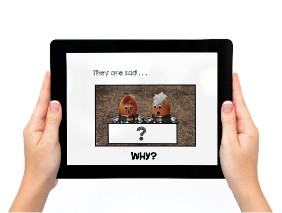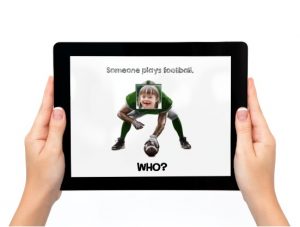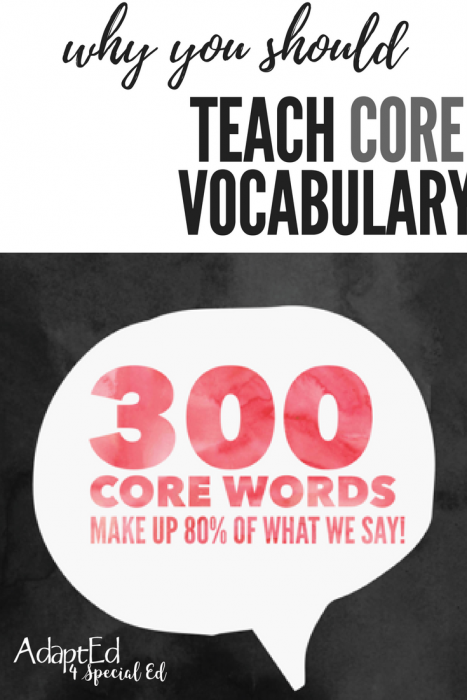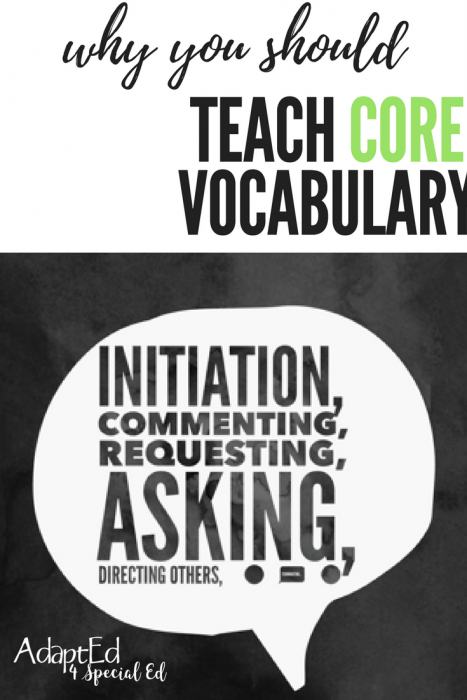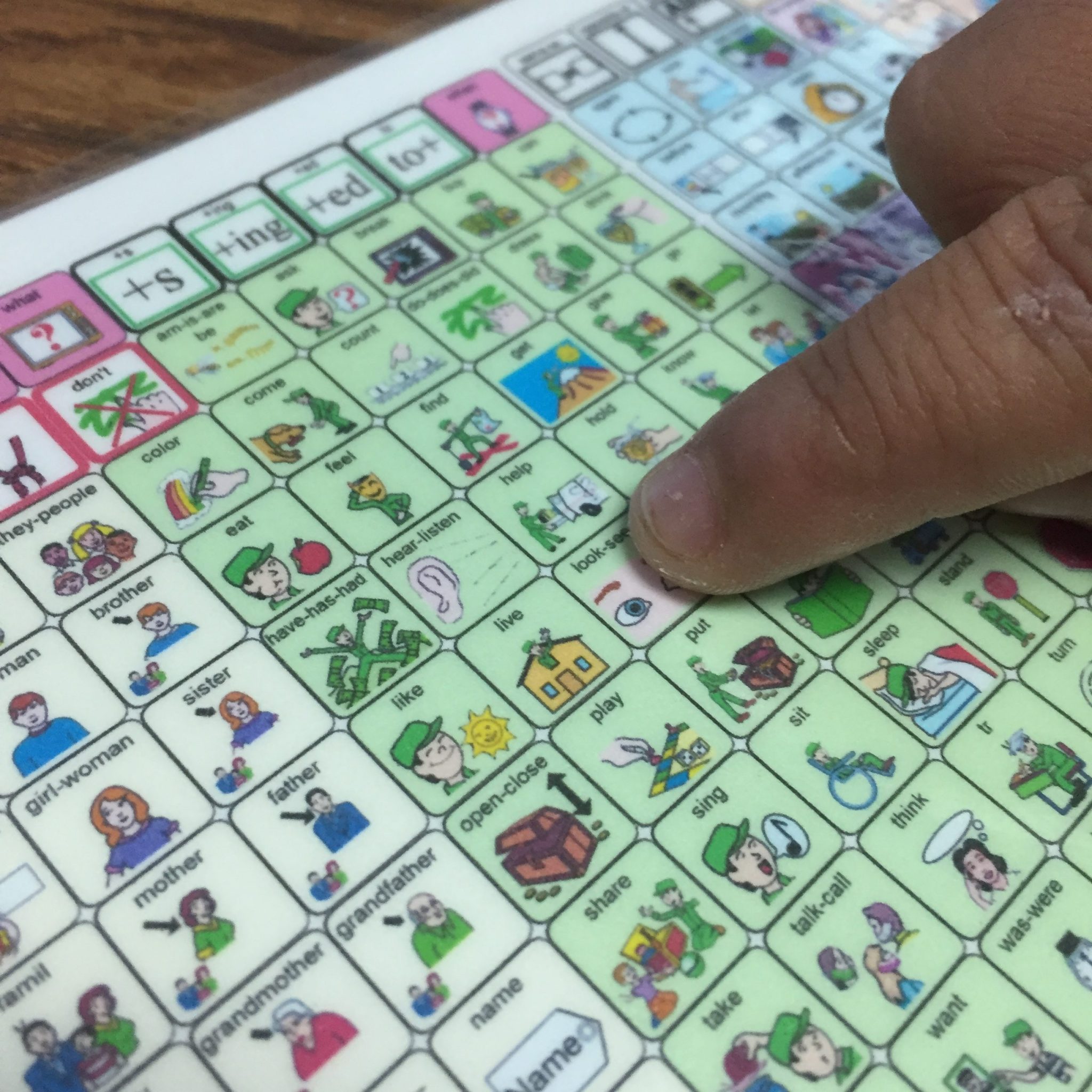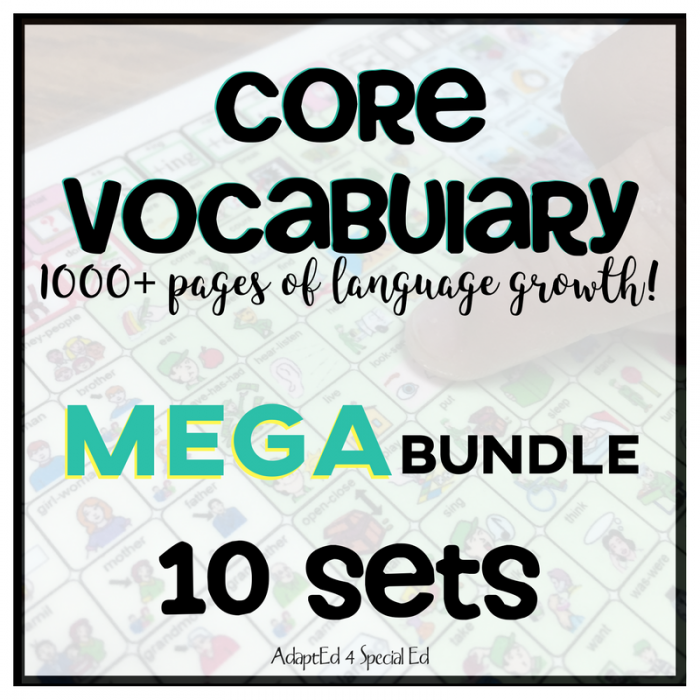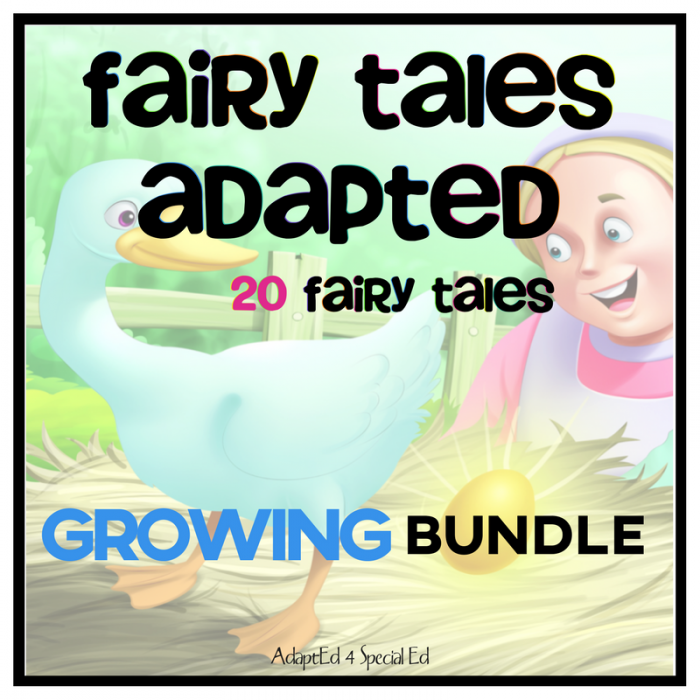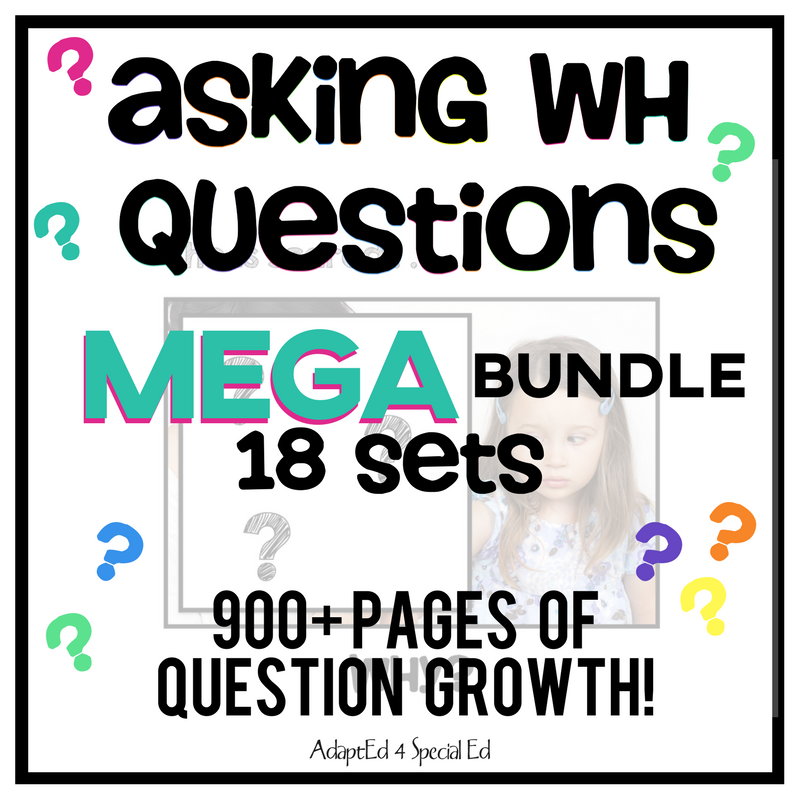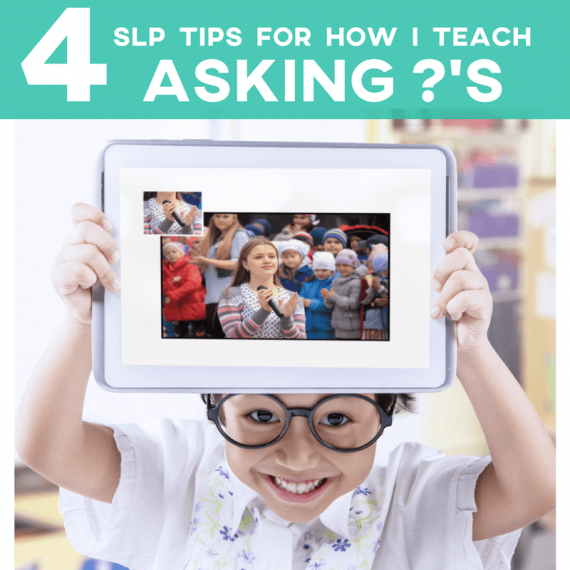
4 SLP Tips for Teaching Special Needs Students How to Ask Questions
By Krystie | Speech and Language
We all see and hear it everywhere: WH Questions, WH Questions, WH questions. It’s all over our students’ goals. It’s constantly being worked on every time we present new information or read a new book. It’s a HUGE search criteria on our favorite websites (Pinterest, anyone?!) Sooooo, you might think it sounds insane to say that WH questions are largely being neglected.
Hold tight! We promise we aren’t insane!
The truth that we have found over and over again as professionals is that our students are often bombarded with practice answering WH questions. And, of course, answering questions is fantastic to target. It’s a skill we all need.
But the piece we tend to forget is that our students also need to know how to ASK questions. In fact, it’s a crucial way for them to understand what is happening in their daily lives, stay safe, and maintain a sense of responsibility and awareness.
Let me detour for a minute and take you back to “Grad School Meg” - - - the days when I only dreamed of the glory of being a ‘real’ SLP 😉 I received a case that challenged me to my core- a woman who had experienced a stroke and could no longer retain almost any information pertaining to memory.
She lived a life where every few seconds she would forget where she was, who people were (even loved ones) and what she was doing. It made for a pretty scary world. An option to help her was INTENSE repetitious practice with a few key phrases. Repetition so intense that I might be able to tap into her procedural memory. In other words, her body would take over and she would almost instinctively know what to say. So what life-changing phrases could I teach her?
You might have guessed the answer: I taught her to ask questions.
“Where am I?”
“Who are you?”
“What am I doing?”
These three questions over and over and OVER.
I’m going to be honest, if she had been able to remember that she had spent an entire hour asking the same questions over and over (week after week) she probably would have tried to have me committed.
BUT- here is where it gets fun- IT WORKED!
Her husband laughed as he told me it may have worked a little too well and that he had caught her rehearsing the questions aloud in her sleep!
Now, when she found herself confused, she could ask “Where am I?” Once she felt safe with her whereabouts she moved on to “Who are you?” Just so you know- EVERY SINGLE time she asked she got an answer.
Asking questions grounded her. Asking questions gave her a sense of safety.
Okay, okay, so what’s the point? Our student’s are not typically needing the ability to ask questions to the same extent as my grad school client, right? Well, it turns out you might be a little surprised at how crucial asking questions is. Even in your own life!
I’d bet in the last week you have asked literally hundreds of questions!!! But hey, who’s counting? (Oh, it’s Meg, the SLP with a passion for asking questions. She is ACTUALLY COUNTING . . . . . . . . . )
So asking questions is important. We’ve got that. Easy Peasy.
Now how to target asking questions? Not so easy peasy. Unless that is, you have an SLP friend willing to share her successes!
So I’m compiling a list of my best tips and tricks! I say it’s high-time we get your students asking questions too 🙂
But I’m an SLP and, let’s face it, I really love to talk. So one more story before we get to that list. I want to tell you about a not-so-successful attempt at teaching my students to ask questions. Because we have all been there. My heart was in the right place, but my materials were firmly in the zone of BORING LAND. You know, the place where students yawn, fidget in their seats and stare at you with half-open eyelids while they pray for the lesson to end.
I tried to teach my students how to ask questions by drilling them over and over again. Kind of like that client I just mentioned. But there were two key differences between my grad school client and my students: 1) The students WERE able to remember that I had been making them ask the same questions over and over. 2) They were children! They needed to be engaged!
So my “boring” materials (and the chorus of groans that accompanied their arrival) were having no success. I finally figured out why that was- my students had absolutely no investment in asking the questions. Why should they ask a question when they didn’t care about the answer?
So, FINALLY, we get to that list of tips and tricks.
Tip #1: Strive to make sure that when your students ask a question they actually want to know the answer!
It’s all about that little thing called communicative intent. In order for asking questions to be rewarding to us we need to care about the response. We need to have interest in finding out new information. Which leads us to . . .
Trick # 2: Use humor!
No matter the grade level or population you are working with, humor is your friend. It ’s the great equalizer when it comes to getting everyone engaged in their learning. When kids are expecting something funny in return they will usually “stay tuned” and put in the effort. Let’s be real- if you have a kid asking “Where is it?” to find out where the car key wound up they are probably going to go crazy if they see the answer was “In the cat litter box!” Cue chorus of “EWWWWWWWW” and giggles. The good news is that the internet is abound with simple, but hilarious images. Take this one from one of our “Asking Why Questions” products: *****
You kind of have to smile, right? (Plus, let’s be real here. We could use a little comedic release too, right guys? Especially on Mondays!)
Tip #3: Use high-quality images that pique interest.
We can’t always be funny. It’s soooooo helpful to throw humor into the mix, but we can’t do it 100% of the time. Another way of engaging students is by being aware of the types of materials and visuals you present to them. Color is great, which is why utilizing technology like computers and tablets can be a wonderful way to present products and materials {all the beautiful, colorful glory without the need to stockpile color printer cartridges!]. Here at AdaptEd, we prefer to use REAL images whenever we can. Cartoons are great and they have their place, but real images are able to captivate their audience in a whole different way. Try switching it up by presenting realistic images and see how your students respond!
And lastly, my favorite:
Trick #4: Make it personal.
What better way to make asking questions meaningful than to have the answers be ABOUT your students? It adds a whole new element of fun when the students are taking turns asking questions about each other. We even like to add a little surprise into the mix, like with this editable “Asking Who” material.
Students ask the question Who? or Who is it? and, to their delight, find one of their classmates featured as the answer. They love to be surprised, to feel included, and to laugh out loud when the smallest girl in class turns out to be a football player!
There are many ways to make asking questions personal for students. Include their favorite foods, toys, hobbies. Even include pictures of their families and friends. When you discuss the things they love, your students feel appreciated and . . . wait for it . . . INVESTED.
So there you have it. Sounds like you are ready to go explore the world of asking questions. Have fun trying all of the possibilities! Or, if you want a head-start, check out our “Asking Questions” line below. Teaching your students to ask questions just might become the next hot goal in your goal bank 🙂 (It is in ours!)
Happy Teaching!
Meg from AdaptEd
You may also be interested in reading our article on Core Vocabulary: How and Why click here to check it out!
